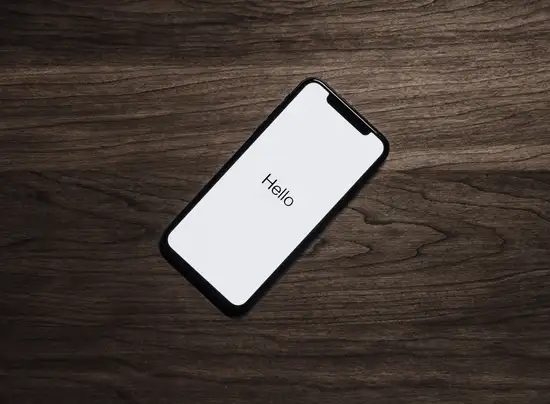Stephanie Cantrill
July 2023
Health site content
What to include on an allied heath website
 Image attribution: Tyler Lastovich at
pexels.com
Image attribution: Tyler Lastovich at
pexels.com
In the good old, old days, people would just run to the village doctor if they needed help. Then came a range of other healthcare professions, and then came telephones, fax machines, mobiles… and the internet in our pockets.
And now that websites are a thing, we look stuff up. We don’t just run into the nearest clinic. In fact, we don’t know where it is without looking it up, right? So, websites are basically ubiquitous.
Does an allied health service really need a website?
Hello, wonderful health professional. I see you. You went to uni forever, or at least it felt like it at the time. You’ve probably done post-grad study, run training sessions for other professionals, maybe published in peer-reviewed journals, got a PhD. And you’ve got a clinic to run.
Do you really need a website?
Sorry, but… yeah, kind of. See above re: the internet is how we find things now. The good news is it doesn’t have to be complicated.
In my opinion, a basic health service website can get away with three pages:
- Home
- About
- Services
(You also need contact information as a separate tab and/or somewhere super-obvious on every page.)
If you want to step it up a notch (and improve your chances of moving up the search pages), a blog or information page can be a good place to keep adding fresh content. Frequently asked questions are handy too.
Put up all the pages you want, if you’ve got the time. But if you’d rather see clients than computer screens, maybe keep it simple: Home. About. Services.
Keep reading for a few tips on what to include on each page.
What to put on your home page
As a health service, you don’t want to use your home page as a giant ad. This is partly because you want to make sure you’re AHPRA-compliant, and also because you absolutely don’t want to come across as cheesy or gimmicky.
So avoid pop-ups, promises of miracle cures, and ‘DON’T WAIT – BOOK NOW!!!’ buttons.
When you’re deciding what to include, it’s helpful to think like a user and not a content creator. You’ve looked at websites before, including health service sites. Right? What were you looking for?
Get your ‘W’ questions going as a starting point – the who, what, where, when, why, how, which that we all loved rolling off our tongues as kids (didn’t we?).
Who
- Who are you? This might seem obvious, but make sure your name is in full view!
- Who do you work with? Kids, adults, NDIS clients etc.
What
- What do you do? No need to go into all the details, but mention your discipline and area of practice.
- What do you not do? If relevant, mention any exclusions.
 A photo of your building can help. Especially if it looks like this.
A photo of your building can help. Especially if it looks like this.Image attribution: Scott Webb at pexels.com
Where
- Where are you? Again, bit obvs. But this is surprisingly easy to forget when you’re stressing about what word goes where and how big the images should be!
- Also, include a map and accessibility information.
- Where do you work? This is relevant if you provide a mobile service, or if your practice is attached to an LGA.
When
- When are you open for appointments?
Why
- Why would I come to you? (This is where you mention the sorts of issues you might treat, but be careful not to get too salesy!)
How*
- How do I contact you? Phone number is obvious. An email address published on your site can invite spam, but you can include a basic contact form that forwards to your email. (Only do this if someone is checking emails regularly!)
- How do I make a booking? Again, e-shouting ‘book your free introductory session now!’ is not advised. But a simple ‘book appointment’ button that links to a user-friendly booking system is great.
Which
- Which funding bodies are you registered with? Mention insurers, compensatory bodies, My Aged Care, NDIS and any others.
*And while we’re asking, how is it that one of the ‘W’ words starts with ‘H’?
And you know what? That’s pretty much all you need to put on the home page. But make sure they can book from this page, or easily click to other pages for more information.
And speaking of…
What about about pages?
Look, this one’s a bit personal.
But hey, you’re nice. I know you are. So why shouldn’t a searcher that fits your client profile also know that?
Potential clients are more likely to trust you (and book an appointment with you!) if they feel like they know you, so put a bit of yourself on this page. And be aware that ‘yourself’ means different things.
There’s the professional you…
- How long you’ve been in this profession
- Any higher qualifications or specialisations (but only if they’re recognised specialisations – don’t use this word if it’s just an area of interest)
- Why you chose this discipline
- What you love about your job
… and there’s the other you:
- What you like to do when you’re not doing your absolute favourite thing ever, i.e. your job
- A bit about your family if you’re comfortable sharing
- Don’t be afraid to show a bit of your personality too
Here’s Sue, showing us how it’s done:
Sue Blue, Physiotherapist (Bachelor of Physiotherapy, Master of Neuro Physiotherapy)
[Nice photo of Sue, looking professional-but-approachable]
Sue has worked in a range of clinical settings over her 20-plus years in physiotherapy. While she’s loved every job, she truly found her feet in neuro therapy and has worked in this area for the last decade. She completed a Master of Neuro Physiotherapy in 2014, and has published several articles on post-stroke care in clinical journals. Seeing people overcoming illness, stroke or neurological injury and living full lives brings her great joy, and she feels privileged to walk alongside people as they regain movement and live out their potential.
In her spare time, Sue is a competitive swimmer and ocean clean-up volunteer. If she’s not near the water, you’ll find her strutting her stuff on the stage. She recently landed the lead role as Maria in a local production of the Sound of Music—a life-long dream come true! Sue lives with her partner, four children and 16 cats. No, she doesn’t remember all of their names.
Do I use my name or say ‘I’?
Ooh, good question!
Again, that’s up to you. If you’re part of a big team, you’ll probably use third-person for each member. But if you’re a sole practitioner and want to come across as friendly and approachable, ‘I’ works. Let’s see what Sue has to say about it…
Sue Blue, Physiotherapist (Bachelor of Physiotherapy, Master of Neuro Physiotherapy)
[Nice smiley photo of Sue and several cats]
Hi, I’m Sue, a physiotherapist with over 20 years’ experience. While I’ve loved every job I’ve had over the years, I found my passion in neuro therapy and have worked in this area for the last decade. I completed a Master of Neuro Physiotherapy in 2014 and have had several articles in clinical journals on post-stroke care in my research role with the University of Starshine. Seeing people overcome illness, stroke or neurological injury and live full lives brings me great joy, and I feel privileged to walk alongside people as they regain movement and live out their potential.
In my spare time, I’m a competitive swimmer and ocean clean-up volunteer. But if I’m not near the water, you’ll find me on the stage. Humble-brag alert… I recently landed the lead role as Maria in a local production of the Sound of Music—a life-long dream come true! I guess I ‘must’ve done something good…’🎵
I live with my partner, four children and 16 cats. No, I don’t remember all of their names. 😊
So, to recap: a bit about your career, to establish trust. And a bit about you, to make people want to meet you! And the third-vs-first person is mainly about your preference.
Services page for an allied health website
The amount of content you put on this page will, of course, depend on the range of services you provide. A multidisciplinary or multi-practitioner team will have more services than a single-person, single-discipline provider. So try to match your content to the size of your clinic.
You don’t need to go overboard—remember, think like a client. You’ll want to mention the clinical areas you work in and the different types of appointments available.
Some services might need a brief explanation, but try to make sure you stay jargon-free without being patronising. Simple?!
And don’t forget people can always contact you for more info. Make that easy for them: contact form on a separate tab, phone number in your header, and ‘contact us’ button on each page. And provide an option for online booking in obvious places throughout the site.
It’s not all about being competitive, but you don’t want to lose a potential client just because they don’t know what you do, or how to get in touch.
 Some people still prefer the good old-fashioned telephone
Some people still prefer the good old-fashioned telephoneImage attribution: Pixabay CC0, found at pexels.com
What else goes on a website?
Let your imagination run wild! Ok, not too wild.
Because of how search engines score websites, a good way to improve the visibility of your site is to provide a blog or information pages. People will often search for a particular condition, treatment type or exercise. If you’ve got some content about the exact thing they’re looking for, they’re more likely to land on your website.
Once they’re on your site, they might have a look at your about page. Just out of curiosity.
Hey, Sue’s an ocean clean-up volunteer. That’s nice. Stroke—my dad had a stroke, and he’s been looking for a physio.
And just like that…
But without being pushy, misleading or heavy on the marketing. Because that’s not what you’re about. And it’s also not what AHPRA compliance is about.
Information, professionalism and quality service. That’s you. So make your site as good as you are!
You can totally do this yourself. But if it sounds like too much work, I’m happy to help. Feel free to get in touch.
Yes please! Oh, hi Sue. Is that a cat (more on that later)?
Oh, hi Sue. Is that a cat (more on that later)? Hi again. You look friendly! But just one cat?
Hi again. You look friendly! But just one cat?